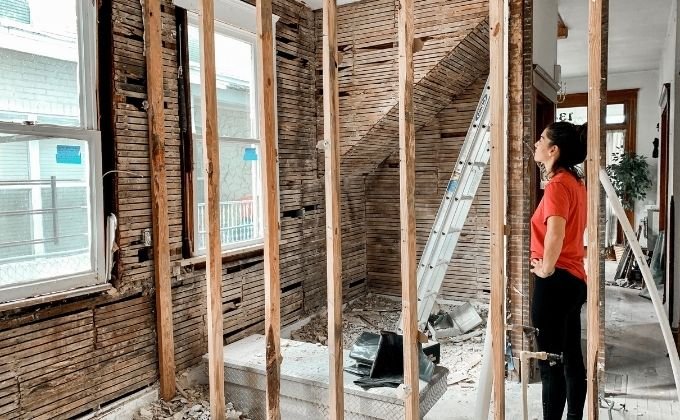Introduction to Electrical Safety
Electricity powers nearly every aspect of modern living, from lighting and appliances to heating and entertainment. While convenient, electrical systems also pose risks when not handled properly. Homeowners often face minor issues such as tripped breakers, flickering lights, or malfunctioning outlets. In these moments, knowing where and how to get reliable solutions can make a difference between a quick fix and a potential hazard. When dealing with these concerns, it’s important to know how to get answers that are both safe and practical, ensuring the well-being of your household.
Common Electrical Issues in Homes
Most households experience small electrical problems that seem simple but could indicate deeper issues. These include circuit breakers that frequently trip, outlets that feel warm, light switches that stop working, and power surges damaging appliances. While some of these issues may require professional intervention, others can be resolved with basic troubleshooting. The key is recognizing which problems can be addressed at home and which require the expertise of a licensed electrician. To avoid guesswork, homeowners should learn how to get answers from trusted sources, whether online guides, instruction manuals, or professional consultations.
Knowing What You Can Fix Safely
Not all electrical issues demand a professional call. For example, resetting a tripped breaker, replacing a blown fuse, or changing a lightbulb are safe tasks for most homeowners. However, even these simple actions should be approached carefully. Before touching any electrical component, always turn off the power from the main switch or breaker panel. By educating yourself on these basics, you can solve minor problems quickly without unnecessary risk. If ever in doubt, the best approach is to research carefully and learn how to get answers before attempting a fix.
When to Call a Professional
Electrical systems are complex and mistakes can be costly—or even life-threatening. Situations such as buzzing noises in the walls, persistent burning smells, sparking outlets, or repeated breaker trips should never be ignored or handled without expertise. These issues often signal underlying wiring problems or overloaded circuits that require a certified electrician. Attempting to repair them without the right knowledge may increase the danger. Knowing how to get answers quickly helps you decide whether to attempt a fix yourself or schedule immediate professional assistance.
Reliable Sources for Electrical Guidance
In today’s digital world, homeowners have access to countless resources on electrical troubleshooting. Manufacturer manuals, reputable home improvement websites, and online tutorials provide clear step-by-step instructions for common problems. However, not all information online is accurate or safe. Always ensure that your sources are credible and up to date with current safety codes. Reading professional advice and checking multiple references can save time and prevent costly mistakes. Developing a habit of checking these resources is a reliable way to learn how to get answers whenever an electrical issue arises at home.
Safety Precautions to Always Follow
Regardless of the type of electrical issue, safety must remain the top priority. Always switch off the power before inspecting outlets, fixtures, or circuits. Use insulated tools when necessary, and avoid working with electricity in wet or damp areas. Never overload extension cords or power strips, and regularly inspect appliances for damaged cords. Adhering to these precautions reduces risks of shocks, burns, and fires. By combining safe practices with the knowledge of how to get answers from dependable resources, homeowners can manage electrical concerns with confidence.
Preventive Measures for Long-Term Safety
Prevention is often more effective than repairs. Scheduling periodic inspections with a licensed electrician helps detect issues before they escalate. Upgrading outdated wiring, installing surge protectors, and using ground fault circuit interrupters (GFCIs) in high-moisture areas like bathrooms and kitchens can significantly improve safety. Simple habits, such as unplugging unused devices and avoiding daisy-chaining multiple extension cords, also reduce risks. Taking these steps ensures long-term peace of mind and fewer emergencies, while also helping you understand how to get answers before problems occur.
Creating an Emergency Plan
Electrical emergencies can happen unexpectedly, such as sudden power outages, appliance failures, or sparks from faulty wiring. Having a plan ensures you act swiftly and safely. This includes knowing where the main circuit breaker is, keeping contact information for a reliable electrician handy, and having flashlights available in case of outages. Teaching every household member the basics of shutting off power and spotting danger signs further enhances safety. In urgent situations, having already learned how to get answers to immediate concerns ensures that you respond quickly and avoid panic.
Conclusion: Staying Safe and Informed
Electrical safety at home depends on a balance of awareness, preparation, and caution. While some quick fixes can be managed independently, others require the attention of qualified professionals. By learning the basics, practicing preventive care, and knowing how to evaluate trustworthy resources, homeowners can protect their families and property. Most importantly, understanding how to get answers when electrical issues arise allows you to respond effectively and confidently. With the right knowledge and safety measures, you can keep your home powered, efficient, and hazard-free.



